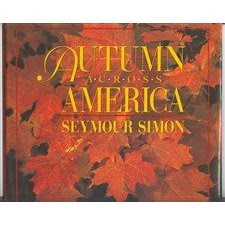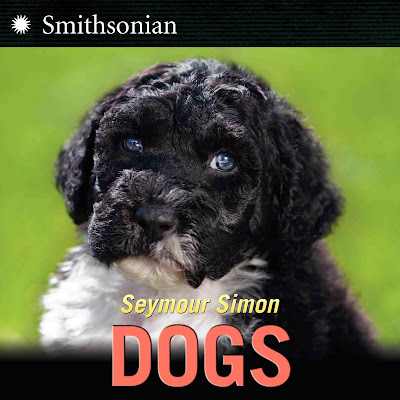March 19, 2010
My grandson Jeremy never outgrew his love of dinosaurs and other prehistoric animals….in fact, at 11 years old he is the one of the most knowledgeable people I know on this topic. The other night he was telling me about a recent discovery of Ice-age Fossils at the La Brea Tar Pits In Los Angeles, including the first intact skeleton of a mammoth. He knew the names of all the animals involved and many details of this important find.
This story, from today’s Live Science news, is for Jeremy (and all the kids, both young and grown-up, who love dinosaurs). A shark attack that took place 4 million years ago has just been reconstructed from the extinct hunter’s fossilized victim - a dolphin. Prehistoric Shark Attack Reconstructed

LiveScience.com: Ribs of a dolphin that lived some 4 million years ago shows bite marks made by the teeth of an ancient shark called Cosmopolitodus hastalis during an attack. Credit: Giovanni Bianucci.
Posted by: Seymour Simon





March 18, 2010
I’ve always liked the "Katie Talks About…." blog. She looks at the world with wit, irony, and an authentic Mom’s point of view. Today, Katie is writing about Seymour’s Global Warming book. Click the link to read her review!
Posted by: Liz Nealon





March 18, 2010

Who doesn’t love trees? A walk in the woods, the sounds hushed as your footsteps are alternately muffled by the carpet of old fallen leaves underfoot or crackling through the recently-fallen dry leaves of autumn, slants of sun filtering through the branches high overhead, is one of my favorite activities not only in the fall, but at any time of year.
Trees are uniquely designed organisms with multiple survival mechanisms that allow them to live far longer than most other living things. You only see the top half a tree in the forest. The other half is the root system and it lies hidden underground. There are two main types of trees: deciduous and conifers. Oaks and maples and many other broadleaf trees are called deciduous trees. They usually drop their leaves in the autumn. Pines, spruce,fir and others grow cones and are called conifers. They keep their leaves and shed only a few of the oldest all year long.
There’s an excellent online story today at Wired.com called The Oldest Trees on the Planet, which includes a slideshow of 12 trees that are each thousands of years old. This photo essay is full of the kind of WOW! moments that I love to share with kids…..for example, there is a photo of a tree that, at 6,615 tons, is the heaviest living organism on earth. Another one was just a sapling approximately 3,500 years ago, during the Bronze Age! Kids will be fascinated by the photographs of these trees and their stories.
Coincidentally, last night we were looking at an incredible book called The Life and Love of Trees. Photographer Lewis Blackwell (who is also the head of creative development at Getty Images) worked with a group of internationally known photographers to document trees in all their majesty and glory. The result is an absolutely stunning book that is very moving, as well. I have taken many, many photographs of trees, but these are particularly artistic and capture the majesty of these forest giants as successfully as any collection that I’ve ever seen.
Posted by: Seymour Simon
March 16, 2010

Last week, I shared 6 things every family should know before deciding to get a puppy, and promised a followup about how to train your new pet. So, here we go!
The first thing that you can teach your puppy is its own name. Always reward a puppy when you call its name and it comes running, either by petting and praising it or by giving it a tidbit. After awhile, just use praise to reward an older puppy. You don’t want to teach it to come only when you have food.
Photo:
Simon, Seymour. DOGS. New York: Collins/Smithsonian, 2009, pg 13.
Don’t use baby talk with a puppy. Keep your commands short, clear and consistent (everyone in the family should use the same words, in a similar tone). A puppy learns by the tone of your voice as well as by the words.
One of the first things you will need to do is paper train your puppy, as soon as it comes home. Spread newspapers on the floor of the room where the puppy is kept, but leave part of the floor bare. Your puppy should be placed on the newspapers as soon as it wakes up from a nap and after each meal. Watch the puppy carefully. As soon as it shows that it wants to squat to relieve itself, rush it over to the newspapers. When it wets the paper, praise it by saying "Good dog, good dog." As you praise your puppy, pet it and make it feel good.
When you see the puppy wet the bare floor, say "Bad dog," in a stern tone. Push its nose to the wet spot and let him know you are unhappy by the tone of your voice. Then place the puppy on the paper and pet it. Clean up the mistake on the floor very thoroughly; you may want to use a few drops of vinegar to disguise the odor of the spot. If the scent of urine remains, it will attract the puppy and it will tend to wet there again. It’s useless to scold a puppy for mistakes a long time after they have been made, so you will have to spend a lot of time watching your puppy in the beginning to get good results. An 8-week-old puppy doesn’t have much control over its bladder and bowel movements, so it will learn much quicker if you watch it so that you can praise it when it goes on the paper.
Then, when you first start to take your puppy outside for walks, take a piece of newspaper with you and repeat the process out of doors. Before long, your puppy will be housebroken.
Other kinds of training should really be started only after your puppy is housebroken. You teach a puppy any new behavior in the same way. Remember that directions should be simple and always in the same tone. Always reward your puppy when it is successful.
Don’t try to teach your puppy too many things at once. Wait until your puppy has learned one thing before you go on to the next. A good command to learn from the beginning is the word "no." Say this firmly and make the puppy stop whatever it is doing. If the puppy stops by itself after you say no, praise and pet the puppy.
"Sit" is the command you will give when you wan your puppy to sit down and be still. Push down on the puppy’s rump and say "sit" in a firm tone of voice. Repeat...
Posted by: Seymour Simon
March 13, 2010

Just this morning I received two copies of the latest (number 8) print run from Simon & Schuster of my book THE MOON. I’m so pleased at this. The B&W original of this book was first published by Four Winds Press (Scholastic) more than 20 years ago. Norma Jean Sawicki was the editor at that time and Brenda Bowen was her (very young) assistant. Brenda and I took a whole day talking about and making changes to EARTH and THE MOON. I remember that session very well (I had a headache by the time Brenda consented to let me go home). Years later, Brenda was the head of S&S children’s book division when we decided to update the book and this time in full color. The book is just beautiful and I’m so glad that it’s still timely. I have been so lucky with the people I’ve worked with in publishing! Thanks to all of them!
Posted by: Seymour Simon
March 13, 2010
It’s so much fun speaking to kids! This is a group of middle-graders at a school in Saddle River, New Jersey. They’ll all raising both hands (along with me) so we can see what the number 250 looks like in reality. Why 250? The kids know. They also know viscerally how far the moon is and how much further are the planets. Not to mention the stars. The kids knew the answers to almost all the questions that I asked during my presentation. They knew the symbol for infinity and guessed that it would make a good zip code for the universe. The only question that they couldn’t guess the answer to was: What was my favorite planet (other than Earth)when I was in 2nd grade? This was even after my telling them that the first book I ever wrote (in 2nd grade)was SPACE MONSTERS! You (of course) know the answer to that question, right?
Posted by: Seymour Simon
March 12, 2010

I’ve noticed as I visit schools around the country that my new DOGS book is very popular with all the kids, from Texas to South Carolina to this week in New Jersey.
Children love dogs, and whose child hasn’t begged for a puppy of their own? A dog can be a wonderful companion, but it is important to make the right choice for your family. Here are six important things to consider before you bring a puppy home:
1. Do some research on types of breeds before you choose a puppy, and make sure you are choosing a breed that is compatible with your own family’s lifestyle. Some breeds need lots of daily exercise - are you an active family? If you choose a breed that needs plenty of attention from family members or else it becomes bored and destructive, you’d better be sure there are people around during the day. Some breeds require large amounts of grooming - is this something you’re willing to take on? There are many questions to ask, but the point is to do your homework before you buy. The American Kennel Club website is a good place to read about all the different breeds as you think about which dog is the right one for your family.
2. When you choose a puppy, look for one that is lively and alert. Make sure that its eyes and nose are clear and without any discharges. A well-cared-for puppy should be clean, look well rounded, and have loose, soft skin. If the puppy looks listless or the kennel is dirty, do not buy. You will be much happier if you start off with a healthy puppy. 3. Which puppy of a litter should you pick: the active one that trots right up to you and licks your hand, or the shy one that is cowering in a corner?
3. Which puppy of a litter should you pick: the active one that trots right up to you and licks your hand, or the shy one that is cowering in a corner?
Your best bet might be neither of these. A puppy that is too friendly to everyone might make a real pest of itself. The other one might be too timid and shy away from strangers.
Choose an independent-looking puppy that will accept your petting but is also perfectly content playing with the other puppies in the litter.
Simon, Seymour. DOGS. New York: Collins/Smithsonian, 2009, pg 30.
4. When you bring your puppy home, keep things calm and relaxed. Don’t have everybody crowding around, picking up the puppy and trying to play with it. It needs a chance to explore its new surroundings in its own time.
5. When they are alone for the first time at night, most puppies will cry or yelp all night long. This is only natural and is nothing to worry about. Don’t punish the puppy for crying - this will only make it more frightened. On the other hand, don’t take the puppy into bed with you, either. Then it will expect to sleep in your bed every night. Instead, try to make sure the puppy gets lots of exercise during the day so it’s tired at night, and try wrapping a loudly ticking clock in an old, soft blanket, so the puppy hears something beside it. Even if all this doesn’t work, don’t worry. Most puppies will calm down after the first few nights.
6. If your puppy comes with a diet sheet, follow the instructions. Introduce any changes gradually. Generally, puppies should be fed three small meals a day until they are six months old, then twice a day until they are one year old. Full-grown dogs can be fed either once or twice a day. Your vet may recommend a special vitamin supplement or some other additions to your puppy’s diet. Naturally, you should follow these recommendations.
Next week, we’ll talk about early training. A great measure of your dog’s successful integration into your family depends on how well you train it as a puppy.
Posted by: Seymour Simon
March 12, 2010
I’m coming out to stay on the West Coast for a month between March 15th and April 15th. I’m writing a new book for my Smithsonian/Collins series and also working on several new media projects which include TV, internet and eBooks. My wife, Liz Nealon, who’s an award-winning media producer for children and the former Creative Director of Sesame Street, will be working on some of these projects with me.
During this time, I’ll be available to speak in schools or for local reading conferences (and not have to charge for transportation in many cases). Because my website is not online yet, I would very much appreciate if any teacher, librarian or education professional reading this could post my note on a relevant listserv or a reading association website.
Thank you!
Posted by: Seymour Simon
March 10, 2010
Dr. Eric Johnson Heller is a member of the Physics and Chemistry faculties of Harvard University, where his recent research has focused on the occurrence of rogue waves like the ones that crashed into a Mediterranean cruise ship last week. This week’s issue of TIME Magazine describes what happened, and details the long history of these unpredictable ocean events.
Dr. Heller is not only a science professor, he is also an artist. He says that he uses his art to illustrate "secrets of Nature only recently uncovered." He has created a series of computer art works called ROGUE WAVES, in which the patterns replicate the flow of these monster waves.
ROGUE 1
© Dr. Eric Johnson Heller
As he describes it: "The Rogue image series arises from the complex branching patterns of energy flow that result as ocean waves negotiate a sea filled with complex currents (like the Gulf Stream and the eddies that it spins off)....The branches are the danger zones: places where rogue waves are more likely to develop. The branches result from an unexpected focusing of wave energy." He makes these images as a way of visualizing the way the energy of the waves builds, sometimes resulting in rogue waves like the ones we saw in the Mediterranean last week.
What a wonderful blending of science and art, helping us all to understand this powerful natural phenomenon.
Posted by: Liz Nealon
March 10, 2010

Have you ever heard the word "clowder"? It means "a group of cats." So, if you have more than one cat in your house, your pets are a clowder of cats.
A group of kittens is referred to as a "kendle." So, that is a kendle of kittens on the cover of my book CATS! 
Posted by: Seymour Simon



